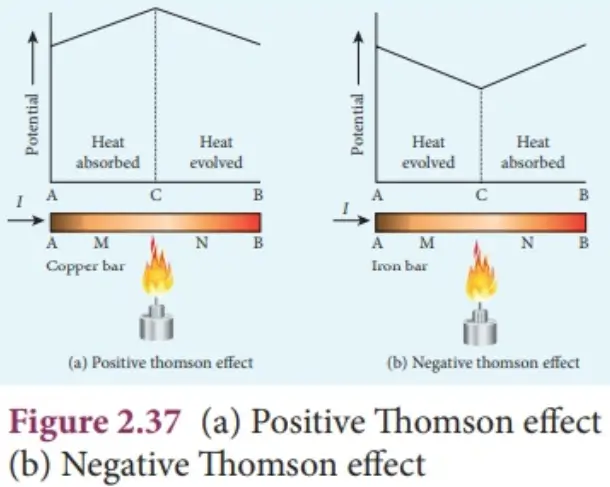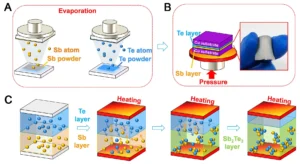The Seebeck coefficient varies across materials with temperature, thus a spatial temperature gradient can induce a gradient in this coefficient. When a current flows through this gradient, it triggers a continuous manifestation of the Peltier effect. Lord Kelvin (William Thomson) forecasted and subsequently witnessed this Thomson effect in 1851. It elucidates the heating or cooling of a current-conducting material with a temperature gradient. When a current density 𝐽 traverses a uniform conductor, the Thomson effect anticipates a rate of heat generation per unit volume.

Where ∇𝑇 represents the temperature gradient, and 𝐾 denotes the Thomson coefficient.
The Thomson effect embodies the orientation of electrical carriers flow concerning a conductor’s temperature gradient. When flowing against the thermal gradient, these carriers absorb energy (heat), elevating their potential energy. Conversely, when flowing in the same direction as the thermal gradient, they release heat, thereby reducing their potential energy.
Thomson demonstrated that when two points within a conductor possess distinct temperatures, the electron density at these locations varies, leading to the generation of a potential difference between them. Additionally, the Thomson effect is reversible in nature.

When an electric current flows through a copper bar AB and heats the midpoint C, C becomes elevated in potential. This signifies that heat is absorbed along AC and released along CB within the conductor, as illustrated in Figure 2.37(a). Consequently, heat is transferred in the direction of the current flow, termed the positive Thomson effect. This phenomenon is also observed in metals such as silver, zinc, and cadmium.
Alternatively, when the copper bar is substituted with an iron bar, heat is released along CA and absorbed along BC. Consequently, heat is transferred opposite to the current flow, termed the negative Thomson effect, as depicted in Figure 2.37(b). This effect is similarly observed in metals like platinum, nickel, cobalt, and mercury.




